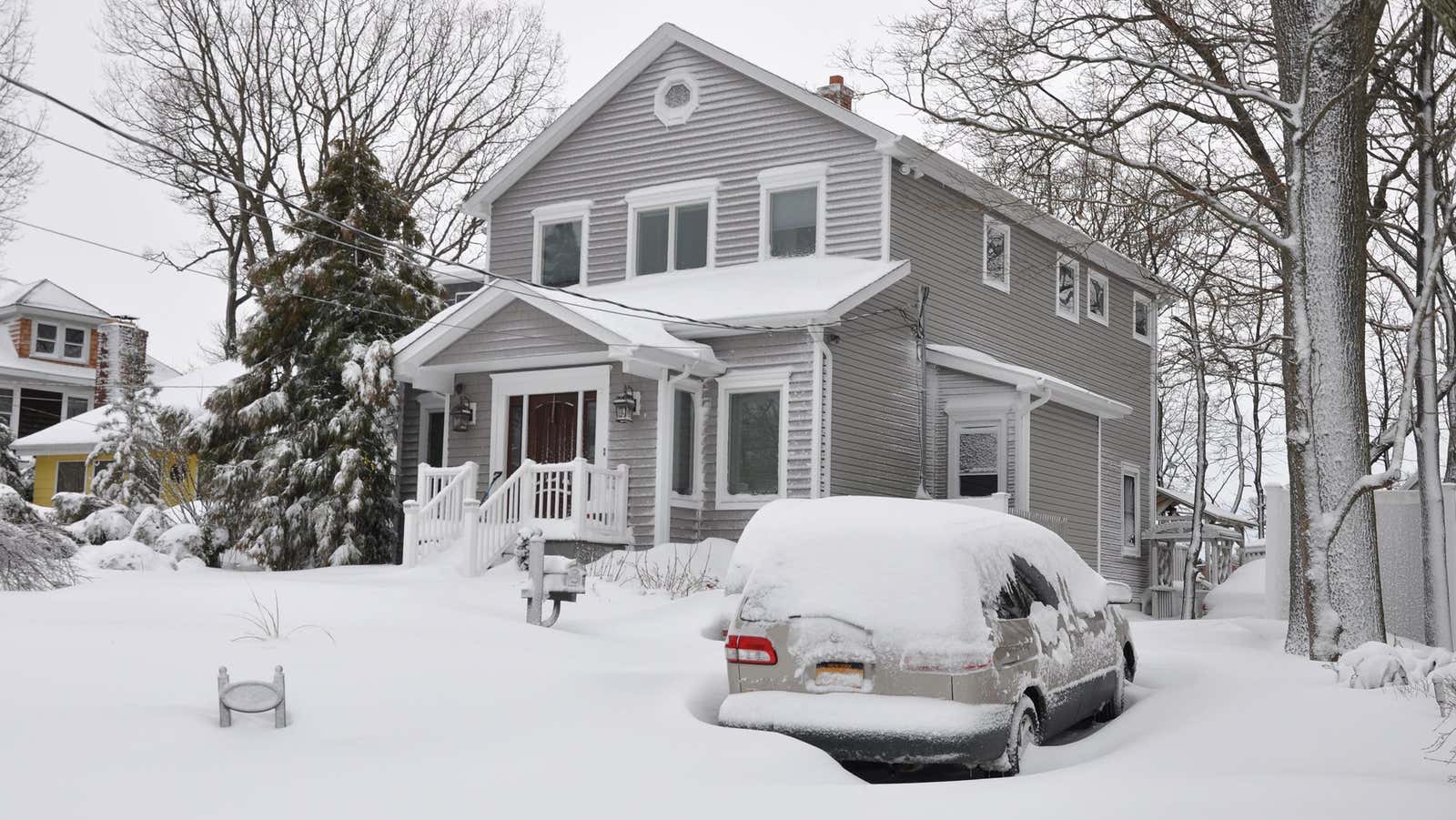There Is Actually a Difference Between “Snowfall” and “Snow Depth”

Snowy days bring almost as much joy to a child as Christmas morning. And as kids and parents anxiously watch the news to see if the weather will cause the school day to be cancelled, you may hear two parameters that sound the same: snowfall and snow depth. But you can have different numbers for each. Let’s take a look at what makes these two measurements different, how to measure the difference between them (that is, if you want to go out into the cold), and what it takes to trigger a snowy day.
What is snowfall?
According to Merriam-Webster, snowfall is defined as “the amount of snow that falls in one storm or in a given period.”
Suppose you want to calculate how much snow fell in one night. Because the grass and air at the bottom of the earth can interfere with your measurements, the National Weather Service (NWS) recommends using a snowboard (or any piece of 16×16″ plywood) as it provides a solid, flat wood surface. You just need to find a place that is easy to walk to and that gives you a 45 degree view of the sky around you. Then place something tall that you can see, like a flag, on top of the snowboard so you can see it after the snow falls.
When you wake up the next day, grab a ruler to measure the amount of snow on your snowboard. If the snow depth varies, take at least three measurements to get an average. You can even report your calculations to the NWS via Facebook or Twitter as they regularly follow their social media accounts.
So what is snow depth?
As you might have guessed from the name, snow depth is the total amount of snow currently on the ground. In most cases, the amount of snowfall and snow depth during a storm are likely to be the same.
However, there are times when these measurements can vary. According to NWS snow measurement guidelines, if snow changes to rain or sleet, those interested in accurately measuring snowfall should do so before the weather changes. Rain can condense or melt snow already on the ground, causing the measurement of snow depth to differ from the actual amount of snow that has fallen.
For example, if the amount of snowfall was four inches before it turned into rain, this would change the amount of snow on the ground, making the snow three inches thick when the rain stopped.
What measurement means my kids will have a snowy day?
According to this 2014 article in The Atlantic , knowing how much snow or depth of snow a school closure will cause is complex and difficult to predict.
In the Midwest, there are other factors to consider, such as temperature and wind chill. Big cities like Chicago and New York have more resources for salt and road clearance than a typical suburb. And it is obvious that in the southern states, even a hint of snowfall can provoke a snowy day.
In the end, it’s not the amount of snow or the depth of snow that will cancel school, but how prepared your community is to weather the storm.